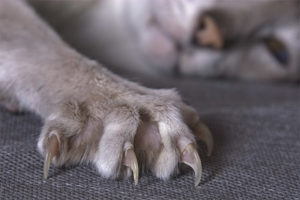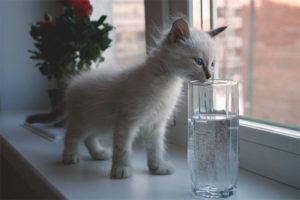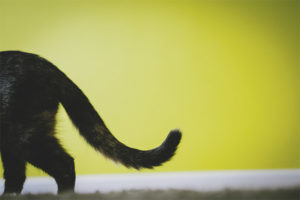The content of the article
There is a lot of food that is banned when it comes to their inclusion in the menu of the four-legged pet. So it’s with vegetables: dog owners are arguing every day whether they can feed vegetables and, if so, which ones. Speech often comes about a greenfinch, which the dogs' esophagus simply does not perceive and cannot assimilate. But we will not run ahead, consider the main aspects in turn.
Features of feeding dogs with vegetables
- There are disputes regarding the way animals feed vegetables. Since it can be difficult for a dog to digest the incoming fiber, it is better to grind foods in advance in a blender. But not all four-legged representatives will agree to eat this kind of food, some are much more interesting to chew on it.
- It is not very important whether the food is ground in advance or not.The main thing is that it should be thermally processed if the pet's state of health requires it. It is better to combine treats, the first chopping, the second feeding in whole or in large chunks. Chewing large meals and fresh vegetables leads to brushing teeth from plaque.
- But this option does not fit puppies and those who are transferred from dry food to homemade food. First, puppies will not be able to thoroughly chew vegetables, so they will remain roaming in the intestines. Secondly, babies are better not to give raw foods, so as not to provoke difficulties in the activity of the esophagus. And pets moving on to natural feeding will not feast on pieces of vegetables, choosing only slices of meat from the whole bowl. Therefore, it is better to grind food.
- If the animal tolerates raw vegetables normally, then heat treatment is not necessary. But if the doctor said that the pet has problems with the stomach or intestines, it is better to extinguish the products or bake them in the oven. It is forbidden to treat pets with canned vegetables or greens, since the products presented have a lot of spices.
Permitted Vegetables
It's time to discuss what vegetables are allowed to give four-legged pets. There is a certain list, choosing products from this list, you can safely treat your pet.
- Pumpkin. Responsible for the correct functioning of all the most important systems and organs of the dog. It improves intestinal motility, prevents constipation, normalizes stools. Acts as an effective antioxidant substance, prevents the appearance of worms (if given pulp with seeds).
- Cucumber. For the most part consists of water, useful and absolutely safe for the health of the animal. It is rich in mineral and vitamin complex, participates in metabolic processes and to a large extent accelerates them. Includes potassium with magnesium, these substances are required for proper kidney and heart muscle activity.
- Squash Low-calorie, useful, acts as a source of basic valuable substances. It has a lot of b-carotene, folic acid, potassium, magnesium, amino acids. Allowed to treat family pet young raw or baked vegetables.
- Cauliflower. According to its taste it resembles potatoes.Some owners are afraid to treat the dog with such a product, but in fact there is nothing harmful in the cauliflower. It is quickly absorbed, does not cause severity, constipation and bloating. Includes a massive mineral and vitamin list of substances that have a positive effect on the activity of the gastrointestinal tract. It is indicated for consumption by four-legged pets that have difficulties with the kidneys, gastrointestinal tract, liver, gall bladder, and heart muscle. Strengthens the outflow of bile, relieving and restoring the liver. Promotes regular bowel movement. Adjusting the chair. Definitely need to be included in the diet.
- Pepper. Naturally, we are talking about a sweet vegetable (Bulgarian). Animals love this pepper, dogs can nibble it whole. It is enough to remove the seed part and entertain the pet. Vegetable includes many mineral compounds that are not found in other similar products. The dog requires copper, fluorine, phosphorus, zinc, manganese, sodium, iron, etc. All this is in pepper. But the choice should fall on a vegetable of red or yellow color, because in these varieties more value is for dogs.
- Carrot. As part of a lot of beta-carotene, so the vegetable will benefit four-legged pets, who have difficulties in the work of the visual system. If your pet has eye problems, it needs beta carotene. It is concentrated in large amounts in carrots, the vegetable is fed to the dog in its raw state. But the carrot is difficult to digest, so dogs are treated to it in the morning or at lunchtime. So that the dog does not refuse to eat, she needs to give a vegetable after a meal. Carrot is good because it whitens teeth, strengthens the muscles of the jaw, fights with an unpleasant odor coming from the stomach or mouth. It should be careful, because the vegetable often causes an allergic reaction.
- Celery. Known for its negative calorie content, it is therefore ideal for animals diagnosed with obesity or overweight. The composition contains the most valuable substances that improve the activity of the heart muscle. Celery is included in cancer drugs, so the dog needs it. Rich in ascorbic acid, beta-carotene, retinol, natural antioxidants and dietary fiber. If the dog has an unpleasant odor coming from the stomach or mouth,celery will relieve this problem. It is also shown to receive pets who have diseases of the joints. Since this type of vegetable is tough, with a lot of fiber, dogs need to grind it with a blender or chop it into small slices.
- Turnip. The main source of calcium, therefore, helps to fight arthritis, heals joint pain. Vegetable is useful for older dogs. It is an excellent tool for the treatment of inflammatory processes, improves metabolic processes, and prevents obesity in prone dog breeds. You can treat your beloved pet with both raw turnip and baked vegetable. It should be understood that some pets may be allergic or upset stool. Turnip is contraindicated in dogs with chronic pathologies of the esophagus, kidneys or liver.
- Radish. In the presented vegetable concentrated a huge amount of coarse dietary fiber. Radish for the animal is a kind of toothbrush. If the pet has any problems with the gastrointestinal tract, then it is better not to give the product.
- String beans. Green bean culture will be useful for the dog, both boiled and fresh.Green beans are considered an excellent addition to dishes prepared from scars. You can purchase the product in frozen form and add it to your pet when cooking.
Controversial vegetables for dog diet
Among all existing vegetables there are those that do not have strict contraindications to use. On the other hand, such products do not show any particular benefit to the animal. Other vegetables on the contrary can only harm. Therefore, such products should be especially careful.
- Beet. In the presented root crop, potassium, folic acid and antioxidants are present in large quantities. On the other hand, beetroot belongs to a number of vegetables, which provoke the development of an allergic reaction in dogs. If your pet has nothing of the kind, then in a moderate amount the beets will only benefit. If a dog systematically eats a root vegetable, then in the presence of red wool, it will have a bright, saturated color.
- Fresh tomatoes. Often, tomatoes are not recommended for inclusion in the daily menu of dogs. If a pet eats ripe tomatoes in large quantities,then soon he will have a serious upset stomach. In addition, the activity of the heart muscle is disrupted. Significantly increased heart rate, tremor and muscle weakness. If you follow the daily rate, the pet will get quite a lot of useful enzymes. The systematic eating of tomatoes in limited quantities will help the dog to avoid the formation of tartar. Tomatoes have a powerful antioxidant effect. Therefore, tomatoes are considered an excellent preventive tool in the fight against inflammatory processes. If the pet has no allergic reaction to the product, it should be given in limited quantities. If possible, give natural tomatoes grown independently without the use of pesticides.
Greens for dogs
- Consider the greens, like vegetables, a dog's stomach is not able to fully digest. Pets themselves do not show much interest in fresh greenery, especially aromatic herbs. Yet in a small amount of a pet such food will be very useful.
- Among the useful types of herbs, dogs can be given a small amount of dill, lettuce, dandelion flowers, nettle leaves,burdock, spinach and sea kale. Sometimes pet spoil mint, basil and melissa.
In the diet of your pet, you can include a fairly extensive list of vegetables and greens. Still it is necessary to take into account the addiction of the dog. If an animal in large numbers leans on a particular vegetable or fresh grass, you should show your pet to the vet. Sometimes eating such food suggests that the dog has health problems.
Video: how to cook vegetables for dogs










To send